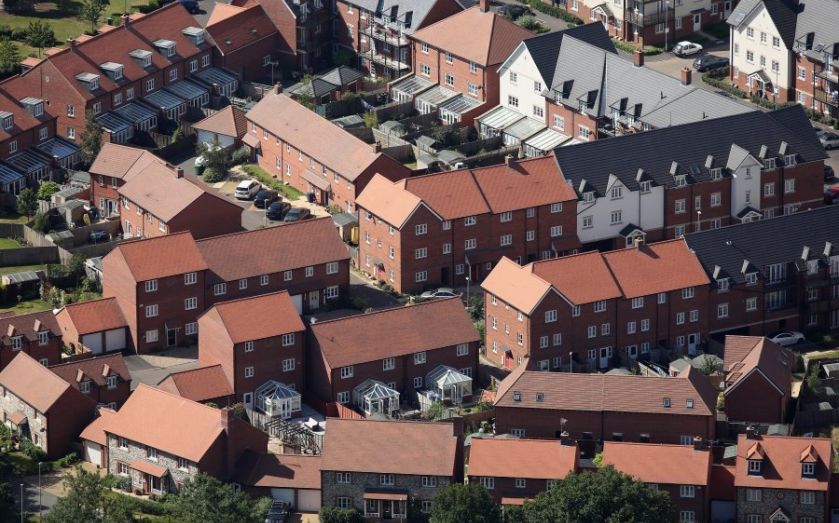It’s time for radical solutions to address London’s housing crisis

As MP since 2001 for the most central London constituency, I cannot recall a time when housing issues have not dominated my postbag. No surprise, perhaps, when UK buyers compete for a limited supply of homes with a global citizenry seeking its own slice of prime London. But I have also witnessed how the polarisation characterising my own constituency has spread to far-flung suburbia. Today, the cheapest 10 per cent of London’s homes are affordable only to the highest-earning quarter of workers.
There was a time not so long ago when the media and politicians saw rising London house prices as an unalloyed good. But as ever more Londoners find themselves excluded from the property bonanza, so the negative economic effects have grown. When rent costs gobble most of one’s monthly income, less can be saved to start up or invest in a business. As the capital loses its lustre as a place to raise a family, employers have to spend more to attract and retain the best people. Meanwhile, productivity suffers as more time is wasted commuting, and buyers pushing the boundaries of mortgage affordability make London’s property market ever more vulnerable to interest rate rises.
When the sky high cost of London’s housing comes at such a fearsome economic price, even free market capitalists like me wonder whether it is time for more radical solutions. It is perilous for any politician to talk of morality, but it seems wrong for hard-working, aspirational people to be so completely priced out of their own property market. It is precisely these Londoners who in previous generations would maintain, build and pass on our city’s social capital to the next generation – social capital that is a crucial part of London’s appeal in the first place. What I mean here is the rule of law, a lack of corruption, protected property rights, respected emergency services, personal freedoms, academic and industrial excellence, and so on. That capital cannot simply be created out of thin air but instead evolves over centuries.
Increasing supply has to be the first step in addressing our housing crisis, and efforts are underway to loosen planning blockages, free up public land, and incentivise development. Nonetheless, our ability to build is undermined by shortages of skilled labour and basic supplies – one developer lamented that the lead-in time for bricks alone is 40 weeks – so it will take time for new homes to materialise. We need urgently, therefore, to look also at who is buying up that new supply.
It is no secret that, in recent years, unimaginably vast sums of foreign money have flooded London’s housing market in search of yield and a safe haven. Last year, a Civitas report revealed that 85 per cent of prime London property purchases in 2012 had been made with overseas money, with two-thirds of those purchases made not for owner-occupation but as an investment. Overseas buyers are purchasing not just at the top end but less expensive new builds. Since unoccupied property in the crowded metropolis is one of the factors pushing up the cost of living for other city dwellers, Civitas suggested imposing curbs on foreign ownership.
There has been an understandable reluctance to do anything that might risk London’s attractiveness as a global city. However, competitor nations like Switzerland, Singapore, the United States and Australia – open, free-trading capitalist states – have all taken action to restrict or deter foreign ownership of residential property. In Switzerland, only citizens and permanent residents can own property. Most Singaporeans live in Housing and Development Board (HDB) properties which citizens alone can own, while foreigners may buy non-HBD homes but will be taxed heavily if they sell within four years. Any foreign non-resident or short-term visa holder has to apply to buy property in Australia through the Foreign Investment Review Board, a body whose rules state that an investment can only go ahead if it leads to an increase in available homes. In New York, there is an annual property tax of up to 19 per cent of the assessed value for homes not occupied by people on the electoral roll.
By contrast, the UK government has hiked stamp duty at the top end of the market – and at the most recent Autumn Statement, on buy-to-lets. These levies hit domestic buyers hard and risk landlords passing costs to tenants. The time may now be ripe, therefore, to consider instead having residential developments which are only open for purchase to UK citizens and permanent residents. Additional levies on speculative ownership and “buy to leave empty” purchases might be considered alongside a potential system for higher non-resident council tax.
Alternatively, we might consider a “community contribution” of, say, 15 per cent of the last sold value of properties not occupied by voters. Unlike a mansion tax, it would not sweep up those UK residents who have been in their homes many years. Indeed, such a change would positively encourage foreign owners with empty properties to rent them out to Londoners, boosting supply and helping to suppress rents.
Some of these proposals may prove impracticable and the impact of foreign cash is, of course, just one part of the bigger housing picture. I am trying instead to provoke debate. We must not lose sight of either the wider economic damage being done by high house prices or the foundations on which high property prices in London are built – the priceless value of social capital created in the past by generations of Londoners.